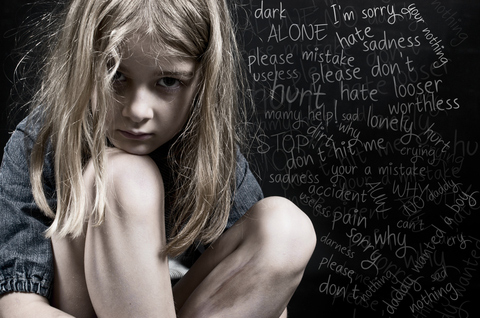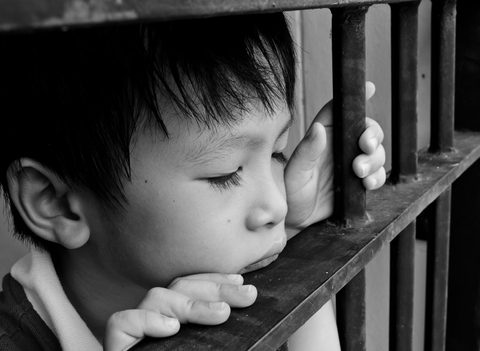Types of Emotional Abuse
WHAT DOES EMOTIONAL ABUSE LOOK LIKE?
There are six well-known types of emotional abuse.1

1. Rejecting
Parents or caregivers who display rejecting behavior toward a child will often [purposefully or unconsciously] let a child know, in a variety of ways, that he or she is unwanted. Putting down a child's worth or belittling their needs are some ways this type of emotional abuse may manifest. Other examples can include telling a child to leave, or worse, to get out of your face, calling him names or telling the child that he is worthless, making a child the family scapegoat or blaming him for family/sibling problems. Refusing to talk to or hold a young child as he grows can also be considered abusive behavior.
- harsh criticism, belittling, labeling
- name-calling
- yelling, screaming or swearing at children
- humiliation or demeaning jokes
- teasing about child's mental capabilities or physical appearance
- refusing love, attention and touch
- physical or emotional abandonment
- shunning the child from the family altogether
- kicking teens out of the home
- locking kids out of the home to discipline or punish
2. Ignoring
Adults who have had few of their emotional needs met are often unable to respond to the needs of their children. They may not show attachment to the child or provide positive nurturing. They may show no interest in the child, or withhold affection or even fail to recognize the child's presence. Many times the parent is physically there but emotionally unavailable. Failing to respond to or consistently interact with your child constitutes emotional and psychological abuse.
- inconsistent or no response to a child's invitations to connect
- failure to attend to an infants physical, social or emotional needs
- refusing to acknowledge a child's interests, activities, schooling, peers, etc.
- abandonment or refusing to acknowledge child as your own
- denying medical or health care, and safe, clean environments
- inability or failure to engage a child emotionally or protect a child from harm
3. Terrorizing
Parents who use threats, yelling and cursing are doing serious psychological damage to their children. Singling out one child to criticize and punish or ridiculing her for displaying normal emotions is abusive. Threatening a child with harsh words, physical harm, abandonment or in extreme cases death is unacceptable. Even in jest, causing a child to be terrified by the use of threats and/or intimidating behavior is some of the worst emotional abuse. This includes witnessing, hearing or knowing that violence is taking place in the home.
- excessive teasing, screaming, cursing, raging at a child
- threatening or intimidating behaviors - scaring a child or others in front of a child
- unpredictable, unreasonable or extreme reactions
- verbal threats to harm the child, self or others
- hostility among family members
- inconsistent or unreasonable demands placed on a child
- ridiculing or humiliating a child in front of others
- threatening to reveal personal or embarrassing information
Children and youth who witness family violence experience all six types of emotional abuse. 2

A 1995 telephone survey suggested that by the time a child was 2 years old, 90% of families had used one or more forms of psychological aggression in the previous 12 months. 3
4. Isolating
A parent who abuses a child through isolation may not allow the child to engage in appropriate activities with his or her peers; may keep a baby in his or her room, unexposed to stimulation or may prevent teenagers from participating in extracurricular activities. Requiring a child to stay in his or her room from the time school lets out until the next morning, restricting eating, or forcing a child to isolation or seclusion by keeping her away from family and friends can be destructive and considered emotional abuse depending on the circumstances and severity.
- leaving a child alone or unattended for long periods of time
- not permitting a child to interact with other children or maintain friendships
- keeping a child from appropriate social and emotional stimulation
- requiring a child stay indoors/in their room or away from peers
- keeping a child from playing with friends and activities s/he enjoys
- not permitting a child to participate in social activities, parties or group/family events
- excessive or extreme punishment for typical childhood behaviors
- encouraging a child to reject friends or social contact/invitations
5. Corrupting
Parents who corrupt may permit children to use drugs or alcohol, watch cruel behavior toward animals, watch or look at inappropriate sexual content or to witness or participate in criminal activities such as stealing, assault, prostitution, gambling, etc. Encouraging an underage child to do things that are illegal or harmful is abusive and should be reported.
- encouraging or rewarding unethical or illegal behavior (drugs, stealing, cheating, lying, bullying)
- promoting or rewarding promiscuity
- giving a child or using in the presence of a child: drugs, alcohol and other illegal substances
- allowing or encouraging children to engage in behavior that is harmful to the self or others.
6. Exploiting
Exploitation can be considered manipulation or forced activity without regard for a child's need for development. For instance, repeatedly asking an eight-year-old to be responsible for the family's dinner is inappropriate. Giving a child responsibilities that are greater than a child of that age can handle or using a child for profit is abusive.
- having
expectations beyond the developmental stage of the child
- forcing a child to participate in unwanted activities without just cause
- requiring a child to care for a parent or siblings without regard for the child's age or ability
- using blame, shame, judgment or guilt to condemn child for behavior of others (parents/peers/siblings)
- unreasonable expectations to perform chores or household duties
- exposing a child to sexually abusive or inappropriate content
Sources:
1.Understanding the Six Forms of Emotional Abuse, Oliver Tuthill, Autumn Tree Productions, 1998 http://www.worldcat.org/title/understanding-the-six-forms-of-emotional-child-abuse/oclc/43980174
2. The Effects of Child Abuse and
Exposure to Domestic Violence on Adolescent Internalizing and
Externalizing Behavior Problems, Carrie A. Moylan, Todd I. Herrenkohl,
Cindy Sousa et al. Journal of Family Violence. 2010 January; 25(1):
53–63. http://www.ncbi.nlm.nih.gov/pmc/articles/PMC2872483/
3. Straus MA, Field C. Psychological Aggression By American Parents: National Data on Prevalence, Chronicity, and Severity Washington DC: American Sociological Association; 2000 http://pubpages.unh.edu/~mas2/CTS27.pdf
4. Psychological child maltreatment. A developmental view. Garbarino J. Erikson Institute for Advanced Study in Child Development, Chicago, Illinois. http://www.ncbi.nlm.nih.gov/pubmed/8356153
What do you think? I love hearing from you, so leave me a comment below. Share your stories, post your challenges and if you benefited from this article, consider sharing it with a friend!

Emotional Abuse Signs: Return to Emotional Abuse Facts
Emotional Abuse Signs: Return to Home
